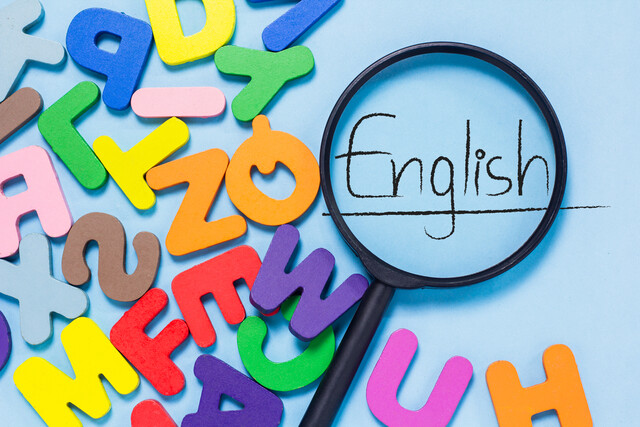Introduction
The ability to read words, sentences, and paragraphs, and to comprehend thought processes and ideas, is important for any reader -- both native and foreign language learners. The ability to absorb content and gain meaning and clarity through word processing is a skill that comes with experience and exposure. This article will focus on helping students learning English as a second language (ESL), as well as those striving to improve their comprehension, to learn how to ask questions while reading to gain greater clarity from written materials.
Comprehension Strategies
Reading requires the ability to talk about, or write about, what has been read to make sure that understanding and clarity has been achieved. Whether you are reading a school assignment, a newspaper article, or a book, using various strategies to help ensure you are gaining the most from your reading sessions is important in increasing comprehension skills. For example, students reading just about any type of material may ask themselves the following questions to help provide focus and direction when determining their comprehension:
- Choose three to five important details of what you have gathered from the article, story, or book you have just read.
- After reading a paragraph, a page, or a chapter, ask yourself what you think might happen next, or what may come next as you continue to read.
- Ask yourself if there are any parts of the paper, article, or story that seem confusing to you.
- Ask yourself five questions about what you are reading -- who, what, when, where, and why.
- Did you learn anything from the article or story that you didn't know before?
Of course, these are not the only questions a reader may ask, but it will give students an idea of the type of approach that may be taken to help focus the reader to look for certain ideas, concepts, and themes.
Reading comprehension for all students relies on an understanding of vocabulary, the spoken language, definitions of printed words, and various strategies that help increase clarity, understanding, and overall reading comprehension. No matter what your age, skills may develop, and even increase, through the use of these various strategies to help pinpoint ideas and topics that will clarify the reading process of any type of document.
Of course, some types of documents require different vocabulary word demands. For example, a person reading a financial document may need to understand basic words that are involved in the finance field. The same goes for medical documents or legal documents.
Vocabulary-building is an essential part of learning to master a language and to speak, read, and write fluently. While this process may take many months, and sometimes even years, the ability to learn new words on a weekly basis will help expand your reading capabilities by leaps and bounds.
Another strategy that many students find helpful is to use Post-it notes or highlighting markers to identify key points or vocabulary words that need to be looked up and defined in any type of document or reading material. Doing so will provide an easy way for students to go back over the material and clarify sentences or thought processes that were difficult to understand the first time around.
Improving Reading Speed and Comprehension
Many students as well as adults doubt that they can improve their skills after they have finished basic schooling. This is not true. While it is not easy, students of any language who work hard may improve their reading speed and comprehension through practice and diligent work.
In order to understand or comprehend, a person must focus his or her attention on the task at hand. Because of this, encouraging students to read out loud, and to read slowly, helps to focus the brain on actually seeing every printed word and helps the student absorb the context as well as thought or idea that is being expressed. While reading out loud is discouraged in classroom environments, students working independently at home may take full advantage of this strategy to help improve reading skill and comprehension, as well as pronunciation and speaking patterns.
To increase fluency in any language, a student needs to regularly immerse him or herself in a variety of materials in the language of their choice. For those learning to speak English as a second language, watching television, going to movies, and reading English-language materials on a daily basis is the best way to achieve success.
Reading short passages or magazine articles that are geared toward topics of interest to every student will help encourage these reading sessions in order to enhance comprehension and increase reading speed. If you're interested in sports, find articles or topics on the Internet about sports. Articles written for the Internet are generally shorter and easier to read than those found in magazines or newspapers, which offers a great starting point for English as second language learners.
Absorbing Information
A reader presented with a piece of paper, a magazine article, or a book is faced with a page full of text that must be read, deciphered, and processed. The first thing a reader of any type of material should do is to identify or establish the focus of the article. What is that piece of paper trying to tell you? Of course, depending on the type of material it is - whether an article, a document, or a book, the reader needs to identify basic questions that will aid in comprehending the content.
Much of what we read today is informational material. Such informational materials may be about office procedures, computer systems, or staff meeting notes. However, many readers also like to read magazine articles or stories and books that don't have anything to do with business, finance, or the legal world. Therefore, some of materials are quite a bit easier to absorb information from than others, and students should not get discouraged or disappointed if they don't understand everything that is placed before them.
The key to absorbing information is to read slowly and take notes, or highlight words that are not familiar. However, try not to constantly stop what you're reading to look up these strange words. Continue to read through the paragraph, or document, or page and try to see if you can grasp the meaning of the context first. Then go back, look up any difficult or unknown words in a dictionary, and return to the passage and read through it again.
Learning how to identify major key points or facts in any written material is also important when it comes to absorbing and processing information. Finding a main idea may be determined by asking five basic questions: who, what, when, where, and how. Basically, there is a motive or reason for every type of document, article, or book that's been written. Trying to understand what the author is trying to say is important in reading for clarity and understanding.
When faced with any type of reading material, students learning English as a second language may feel overwhelmed by strange vocabulary, long passages, and complex sentence structures. However, by taking apart every sentence and learning to identify new or difficult words, students will be able to decipher and comprehend what is being written if he or she is patient, diligent and determined to find the meanings found within the written word.
Introduction
Techniques And Methods to Improve Reading Skills
Every student will react to different teaching methods and techniques, regardless of subject. Reading is no different. As we have mentioned before, what works for one student does not work for another. Therefore, students should not be discouraged if one technique fails to work for them, but always strive to find new ways of enhancing the learning experience.
Various methods are used by teachers at all grade levels to help their students become better readers. Two techniques, called skimming andscanning,are very popular at the middle, high school, and college levels. However, this method requires students to possess a rather large vocabulary, and therefore may not be suitable to all students. Still, try it just for fun, and if it works, great!
Skimming is a process of rapidly reading through materials. Not necessarily speed-reading, this method does require a brief glance through the materials to pick out certain words or concepts that are the focus of the passage. In a sense, this method can be considered "previewing" materials. A student does not need to know every word when using this process, and it can be a valuable tool when he or she is looking for a specific point or fact.
Headings, subheadings, and bold faced or italicized words are easily spotted by the eyes and help to focus the reader's attention on certain words that are important in the passage. Graphs and charts, as well as captions, photos, and titles also help provide clues to determine the type of information that is included in the reading material.
Skimming can be conducted in different ways. The most common method is to hold the material in front of you and then pass your eyes down the middle of the page, focusing on facts you might need. Another method is to skim the page from the top left hand corner down to the bottom right-hand corner of the page. Then repeat the process, working for from the upper right-hand corner to the bottom left-hand corner of the page.
Reading the first paragraph of any chapter, line by line, may also complete skimming. Then, the reader may scan materials for headings or vocabulary that are designated in boldface. Thereafter, read the first sentence of every paragraph, looking at pictures, maps, graphs, and charts, as you move throughout the text, until you get to the last paragraph. Read the last paragraph, which often recaps the main point of the passage you have just read.
Skimming over materials in such a way takes practice and may seem difficult for students, at first. However, when faced with large passages or pages of text, especially the type found in textbooks, this method is surprisingly efficient.
Scanning is a little different. Start at the beginning of a page or passage and look for important words or vocabulary that are related to the topic. For example, this method may be used when a student is looking for a specific word, or an answer to a specific question. Often, in textbooks, these words may be presented in boldface, making them quite easy to find.
Students looking to find answers to specific questions often use scanning. Often, a student may move their vision in an "S" or zigzag pattern down the page to look for this information. When looking for names, places, or dates, look for capital letters or numbers.
· Remember the method we mentioned that was introduced by teachers at Ohio State University, the SQ3R method developed as a technique for absorbing information that has made its way into high schools and other universities around the country.
Remember the Basics
Using Games to Enhance Reading
Thanks to the Internet and to the popularity of video games, students learning English as a second language (ESL), as well as those hoping to improve their reading and comprehension skills, are able to access large numbers of resources and materials both on the Internet and off-line. Resources on the Internet provide a wide range of activities and games that engage reader interest at all levels.
Visit the video game section of any retail store, and students will be able to find various learning options for a variety of skill levels. Video games that provide interactive options for students of all ages serve to engage enhanced learning, thanks to the combination of visual, tactile, and audio presentations.
For those who don't have access to the Internet or video games, other options are available that will help to increase vocabulary and reading speed and comprehension. Crossword puzzles, Find-a -Word games, and games such as Hangman help to increase vocabulary skills.
Adults learning English as a second language should not be embarrassed or shy about accessing such resources. Start slow, and use elementary reading books and activities to become more comfortable with vocabulary, sentence structure, and reading comprehension basics.
Conclusion
Every student needs to find the best technique to increase and improve his or her own reading skills. Whether this is done through board games, crossword puzzles, video games or interactive learning websites on the Internet, improving reading skills can be fun and challenging at the same time.


























